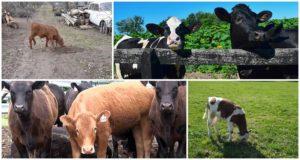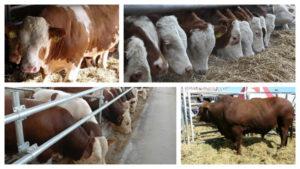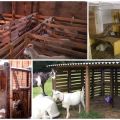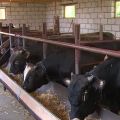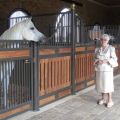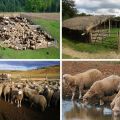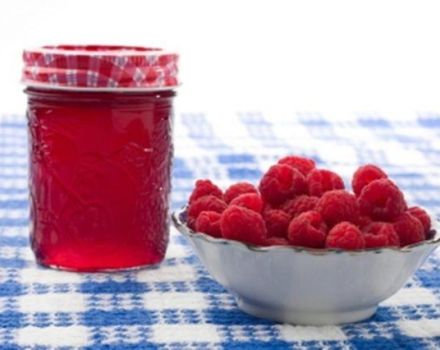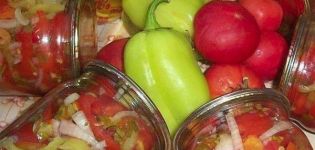Dimensions and drawings of a stall for cows and bulls, how to make at home
The performance of a farm animal, its health and duration of use is directly affected by its comfort. Cattle (cattle) are no exception. It is important to properly equip the animals for keeping - a barn. And also pay special attention to cow stalls - a personal space where the cattle eat and rest.
Features of building a stall with your own hands
The optimal material for building a barn for cattle in a small farm is boards. But stone or brick is suitable as an alternative. The first guarantees the strength of the barn. But it has a detrimental effect on the health of animals, which often get sick in conditions of damp concrete.
To make the wooden structure more durable, the foundation is poured. A cement base will ensure the shed's longevity. However, it will be dry and warm. The stone is useful for the construction of adjacent walls.
Requirements
Drawing up a preliminary drawing with calculations, the farmer takes as a basis the potential of his capabilities, the availability of ready-made structures available for conversion, the area, as well as the number of heads. When building a barn, it is important to take into account the dimensions of the animal: for fattening bulls, the sizes are provided for one, for more "fragile" cows - others, and for calves - the third.
But there are points that should not be forgotten when organizing a barn with a stall:
- a site for a building is selected on an elevation;
- in the building you need to make a drain;
- think over the conditions for securing the cow during milking and for feeding;
- the belt or rope should not cause discomfort when moving up and down;
- for tied cows, free entry / exit into the stall is required, as well as movement around the barn.
Diagrams and drawings
When calculating the parameters of an individual place for an agricultural animal, not only the overall dimensions of the individual are taken into account, but also the space necessary for the comfortable movement of a cow or bull. The dimensions of the stall for tied-type cattle are calculated according to the table. The figures given in it are averaged and vary from the size of the individual: more space is required for the goby, as well as for cows that like to lie down more.
Table. Indicative figures for calculating stall dimensions:
| Parameters | Distance, m |
| Lengths from shin above knee to back | 1,6-1,8 |
| Head volume | 0,5 |
| Extra space for maneuvers | 0,5 |
Pen length
According to this parameter, zootechnicians distinguish several types of barn. The main ones are:
- Long (more than 2 m).The main disadvantages are an increase in labor costs and an irrational attitude towards the territory. Minus can affect milk yield.
- Medium (1.7-2 m). Optimal range for cattle tethering. Production indicators are not affected, the farm feels relatively free.
- Shortened (1.1-1.4 m). The length is too short for the animal. In such conditions, the septum of the rear part injures the udder of the cow, provoking mastitis.
Width
An unconditional unit for an adult livestock of cattle is 1 m. A decrease in the value to 0.8 m is acceptable when keeping young animals up to 20 months old. In general, the calculation is carried out taking into account the characteristics of the content group.
Table. Stall parameters by type of cattle (tethered method):
| View | Width, m | Length, m |
| Dry and milking | 1,0-1,2 | 1,7-2 |
| Deep pregnancy | 1,2-2 | 2,0 |
| Novotelny | 1,2 | 2,0 |
| Meat (fattening cows and bulls) | 0,9-1,0 | 1,7 |
| For breeding bulls | 1,5 | 2,0 |
Several methods are applied to calves. The conservative one provides for their keeping in a cage in an insulated room with wooden flooring - up to 1.5 months. Then the individuals are transferred to a room with an area of at least 4 m2... There is also a cold method: young animals are kept in an insulated box with a corral outside.
Floor
Norm for one adult head - 1.7-2.3 m2... It is done at an angle, which allows the feces to drain. But it should not be large, otherwise the risk of injury to animals increases. The optimal figure is 2-3 °. The floor can be solid and partially slatted. In the latter case, a reservoir is placed under the structure.
If the flooring is wooden, it will last a maximum of 2-3 years. It is more often done to keep warm and reduce the cost of extra bedding. To extend the service life, they resort to organizing a concrete floor. In addition to such advantages as moisture resistance, protection from rodents, its main disadvantage is cold.
Litter in the barn
It is a layer of evenly distributed hay. The latter is weekly replaced with a new one. In large barns, an alternative is polyurethane covers or rubberized mats. They keep you clean and warm.
Where to locate the barn
Before building, the location of the building is determined. The structure for cows is located at least 15 m from the well or well. Sometimes a barn with stalls is combined with a blank wall of the dwelling. Here, savings on building materials come to the fore. But most often outbuildings are built at a distance from the home. When selecting a site, a corral is also provided.
Construction process
Building a small shed with stalls for bulls or cows is easy. The main thing is to carry out calculations and arm yourself with the appropriate consumables. The video will help you realize your plans on your own:
But the design of a large barn with stalls for cows, as well as its construction, should be entrusted to an experienced person. The latter will be able to take into account all the necessary details.
Foundation
Its quality affects the service life of the building. If you plan to build a brick shed, it is better to fill in a monolithic foundation under it. For a wooden barn, a columnar one is also suitable. When pouring any kind, they organize a drain, perform waterproofing.
Floor, walls, roof
The base must be suitable for cattle hooves and waterproof. Sometimes the floor in stalls is made of planks. But more often concrete is poured. For the drainage of feces, gutters 1 cm high and 2 cm wide are laid, having foreseen the slope.
The walls protect the livestock from the winds, creating the necessary microclimate in the stalls. When building a large cowshed, they are laid out of adobe bricks. From below the building for cows is edged with straw-clay masonry.
At the end, a roof is lined over the stalls - tiled or slate. In areas with warm winters and long daylight hours, they are covered with polycarbonate. An attic is provided under the vault. The latter, in addition to the functions of an air gap, will be an excellent storage for hay and inventory.
"Interior" of the bull shed
When planning a structure, it is important to be guided not only by the specified parameters of the parties. There are also such components:
- Ventilation. Make it natural, avoiding drafts.
- Heating system. Insulating material is used during construction.
- Lighting. In addition to the daytime, artificial is provided for good performance.
- Drinking bowls. They supply water by hand or during construction they lay a water supply system.
- New remover. At home, it is easiest to clean it weekly, with a hay bed.
To ensure high production rates, the cow, the bull needs to create a comfortable environment. The arrangement of stalls will help to achieve an optimal microclimate.

